India, often known as the land of agriculture, houses a myriad of crops that form the backbone of its economy. However, the pressing question is, “How improvement can be made in crop yield?” This issue becomes pertinent, especially due to increasing global demands and climate fluctuations. It’s a known fact that the improvement in crop yield, by definition, refers to the enhancement of the amount of agricultural output per unit of land. This is crucial for India, as the need for improvement in crop yield is ever-present, given the population demands.
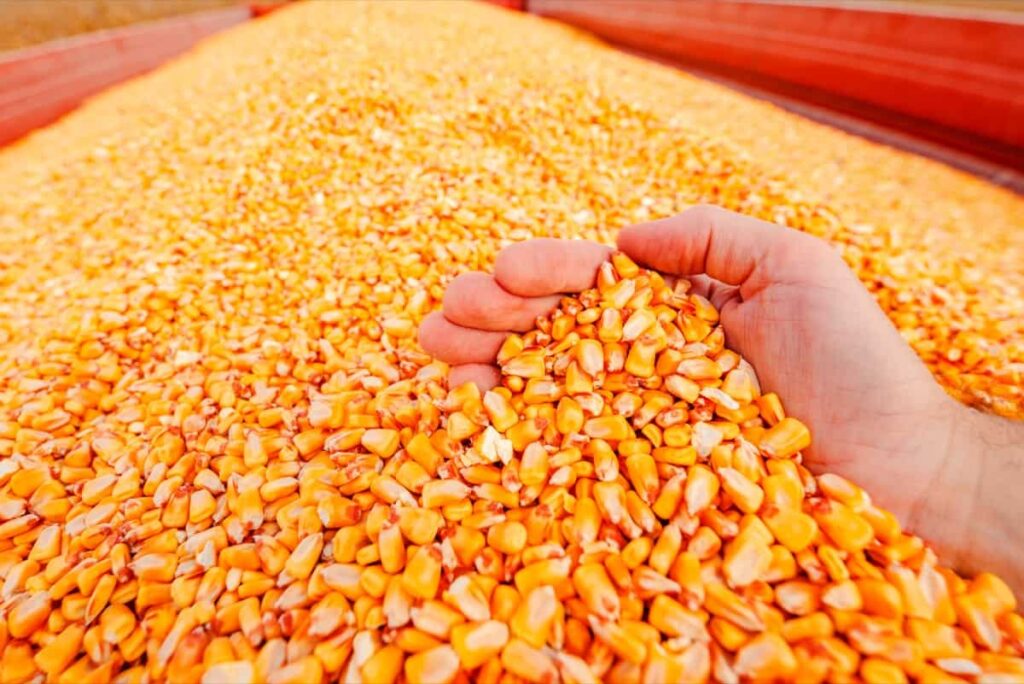
There are various ways by which we can increase agricultural yield in India. Highlighting a few, the three primary steps include adopting better management practices, embracing new technologies, and prioritizing sustainability. From making use of crop yield prediction using machine learning to understanding the improvement in yield in organic farming or seeking methods to increase crop yield naturally, there’s an array of strategies to be explored.
Factors Affecting Crop Yield Per Acre in India
Crop yield in India is an intricate play of various factors, each contributing to the final produce. Foremost among them is soil fertility, which dictates how well crops like rice, wheat, or pulses grow. Water availability, determined by rainfall patterns and irrigation facilities, directly impacts crops such as paddy or sugarcane. The threat of pests and diseases is a perpetual concern, affecting the yield prospects of cotton, groundnut, and many more. Seed quality and the application of appropriate agricultural techniques further influence yield.
Climatic conditions, fluctuating temperatures, and unexpected weather phenomena play a pivotal role, too. Socioeconomic factors like market demand, governmental policies, and local infrastructure can also shape farming choices and yield. Understanding and managing these factors are crucial in the quest for achieving optimum crop yield per acre in the diverse agricultural landscape of India.
Crop Management Practices for Higher Yield Per Acre in India
- When pondering “How can we increase agricultural yield in India?” effective crop management practices emerge as the answer. Here are five ways of improving crop yield:
- Crop rotation ensures soil health, reducing the risk of pests and diseases, particularly for crops like groundnuts and chickpeas.
- Intercropping, growing two or more crops simultaneously, optimizes resources, benefiting crops like soybean and millet.
- Proper nutrient management using organic compost and bio-fertilizers provides balanced nourishment, ensuring the growth of robust crops like mustard and lentils.
- Training farmers in advanced agricultural techniques is pivotal. When farmers know how this method increases the crop yield, they are more inclined to adopt them.
- Harnessing technology, like crop yield prediction using machine learning, can guide farmers in making informed decisions, thereby enhancing crop yield.
In case you missed it: How to Start Avocado Farming in India: Varieties, Yield, Cost, and Profit per Acre
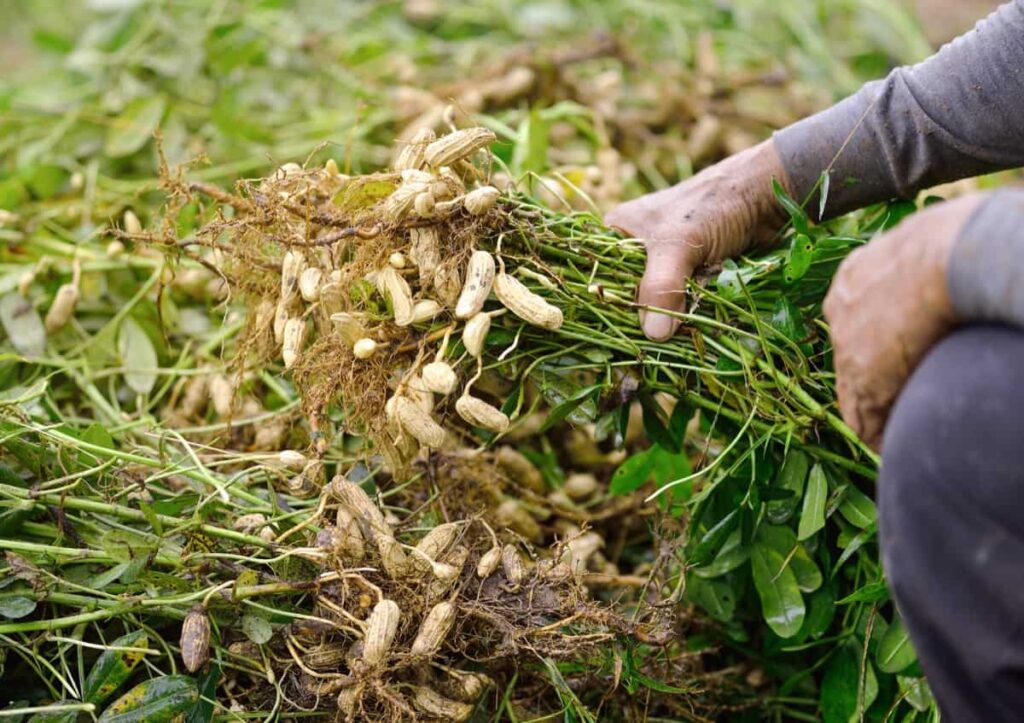
Impact of Climate Change on Crop Yield Per Acre in India
Climate change poses a formidable challenge to India’s agricultural sector, directly impacting the crop yield per acre. As unpredictable weather patterns become more common, traditional farming calendars face disruptions. Erratic monsoons, unexpected dry spells, and heightened temperatures affect the normal growth cycle of many crops. For instance, crops like wheat and paddy, which are temperature-sensitive, may experience reduced yields due to increasing heat stress.
Flash floods and prolonged droughts can devastate crop fields, especially rice, sugarcane, and pulses. Furthermore, climate-induced changes can lead to the proliferation of pests and diseases, exacerbating the challenges for crops like cotton and maize. The indirect effects, such as soil salinization due to rising sea levels, further compound the problem. In this context, adaptive and resilient farming practices become indispensable to safeguard India’s crop yield from the clutches of climate change.
Role of Irrigation Techniques in Increasing Crop Yield Per Acre in India
Water is undeniably a crucial element in agriculture, and its efficient management can significantly influence crop yields in India. Varied irrigation techniques are tailored to suit the distinct needs of diverse crops and specific regional conditions. Traditional flooding methods are being complemented and sometimes replaced by more efficient systems like drip and sprinkler irrigation. Drip irrigation targets the root zone, ensuring minimal water wastage, and is particularly beneficial for water-intensive crops like sugarcane.
On the other hand, Sprinkler systems are apt for larger fields with crops like wheat and maize. Using rainwater harvesting techniques further fortifies water availability, allowing crops to thrive even during dry spells. Effective irrigation not only boosts crop yield per acre but also aids in maintaining soil health and combating the negative impacts of erratic rainfall patterns and prolonged droughts.
Importance of Soil Fertility for Higher Crop Yield Per Acre in India
Soil fertility in India is foundational to achieving optimum crop yields. Fertile soil, with essential nutrients, ensures robust plant growth, leading to higher agricultural productivity. A harmonious blend of minerals, organic matter, and a balanced pH level fosters the ideal environment for crops like rice, wheat, pulses, and oilseeds. But, with the increasing demands of feeding a burgeoning population, soil often depletes nutrients.
Hence, replenishing it becomes a necessity. Measures like organic composting, green manuring, and judicious use of fertilizers help maintain and enhance soil fertility. Notably, when the soil is fertile, it not only boosts crop yields but also improves the nutritional value of the crops, making it an unbeatable factor in the agricultural landscape of India.
Crop Rotation Strategies for Improving Yield Per Acre in India
Crop rotation, a tried-and-tested agricultural practice, remains integral to enhancing the yield per acre in India. By alternating between different crops seasonally or annually on the same piece of land, farmers can achieve multiple benefits. This method breaks the life cycle of pests and diseases, reducing their prevalence. Soil health is significantly improved, as certain crops, like legumes, fix nitrogen in the soil, benefiting subsequent crops.
In case you missed it: How to Grow Pistachios at Home: Propagation, Planting, Pollination, Care, and Yield
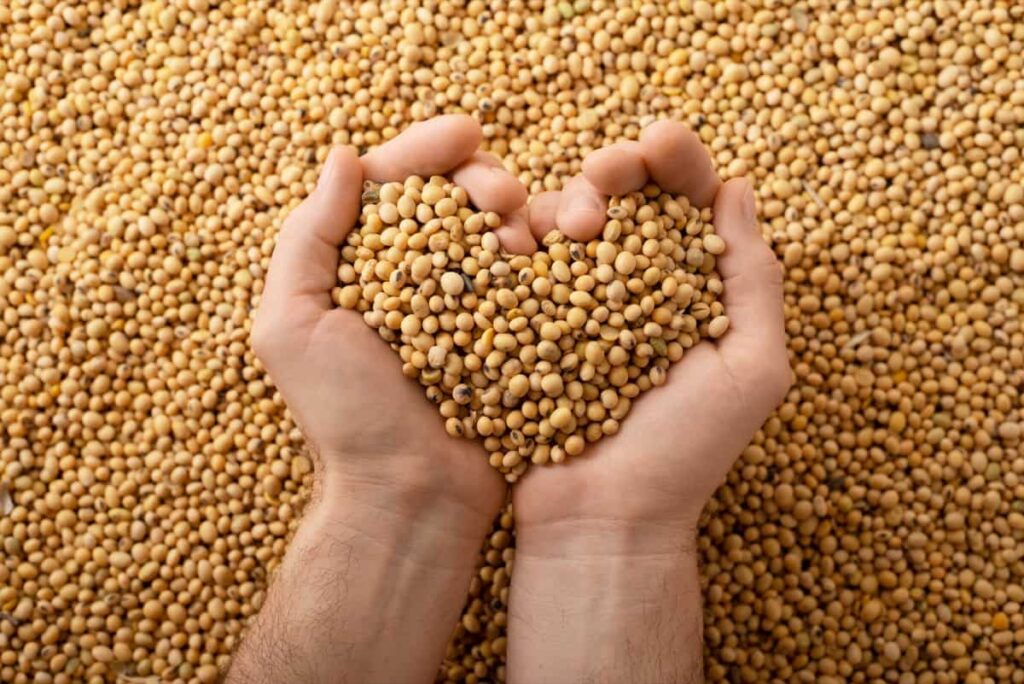
Rotating crops also aids in mitigating the depletion of specific nutrients, ensuring a balanced soil nutrient profile. For example, growing leguminous plants can help restore soil fertility after cultivating a nutrient-exhaustive crop like rice. In essence, crop rotation directly boosts yields by fostering a conducive growth environment and ensuring long-term soil sustainability, making it a cornerstone strategy for improving crop yield per acre in India.
Adoption of Modern Agricultural Technologies for Increased Crop Yield Per Acre in India
Integrating modern agricultural technologies is revolutionizing how farming is conducted in India, aiming for increased crop yield per acre. From precision farming that tailors farming practices based on real-time data to using drones for aerial monitoring, the face of agriculture is changing. One notable innovation is crop yield prediction using machine learning, allowing farmers to make informed decisions based on predictive analytics.
Furthermore, biotechnology plays a crucial role with genetically modified crops that resist pests or adapt to challenging environments. Also, automated irrigation systems ensure that crops receive the exact amount of water they need. As India grapples with challenges like limited land resources, climate change, and increasing food demands, adopting these modern technologies becomes not just an option but a necessity for ensuring higher and sustainable crop yields.
Role of Genetic Engineering in Improving Crop Yield Per Acre in India
Genetic engineering stands at the forefront of modern agricultural advancements, offering a promising avenue to improve crop yield per acre in India. Through genetic modification, scientists can create crop strains with improved resilience against pests, diseases, and challenging environmental conditions. Moreover, these genetically modified (GM) crops can be tailored to have higher nutritional content or faster growth rates.
For instance, Bt cotton, a GM crop introduced in India, exhibits heightened resistance to the bollworm pest, leading to increased yields and reduced dependency on chemical pesticides. Besides, drought-resistant and salinity-tolerant crop varieties are being developed to combat water scarcity and soil salinity issues. As India faces mounting challenges from climate variability and population growth, genetic engineering offers hope in ensuring food security and improved agricultural productivity.
Impact of Pests and Diseases on Crop Yield Per Acre in India
Pests and diseases wreak havoc on India’s agricultural landscape, significantly denting the crop yield per acre. The repercussions are severe and manifold, from the locust swarms that devastate vast stretches of cropland to the wilt disease affecting pulses. Rice, a staple in the Indian diet, faces threats from pests like the brown plant hopper and diseases like blast. Similarly, wheat is vulnerable to rust, while sugarcane often grapples with the menace of the stem borer.
In case you missed it: 15 Best Apple Tree Fertilizers: Liquid and Organic Nutrients for Healthy Fruit Yield
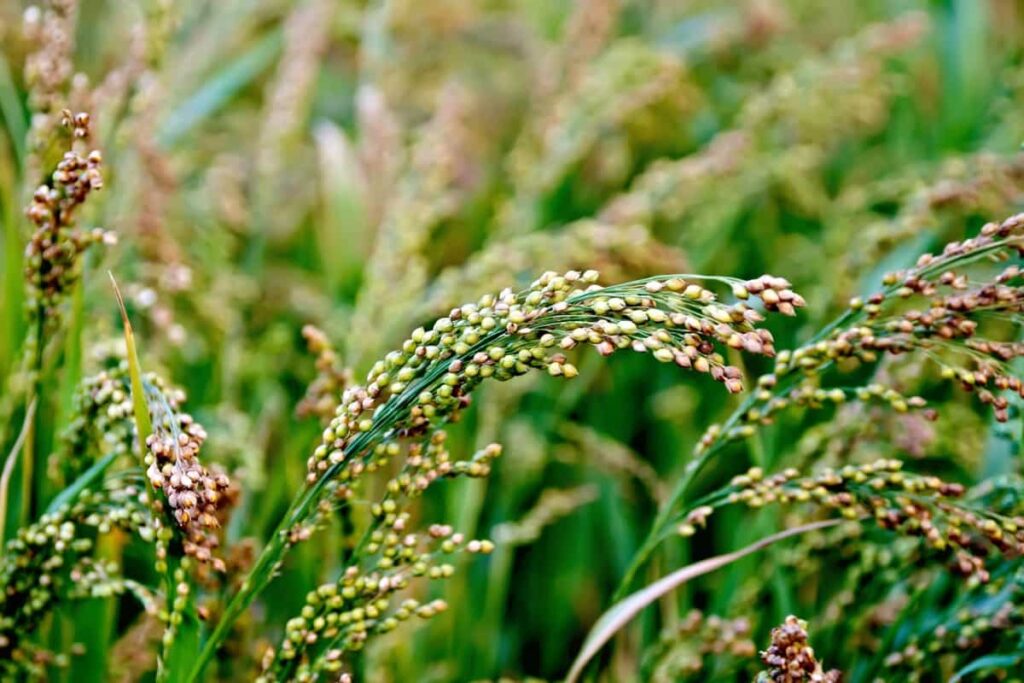
These infestations and infections reduce the overall yield and degrade the quality of produce, making it unfit for consumption or sale. Consequently, the economic impact on farmers is substantial. Tackling these challenges requires an integrated approach, encompassing preventive measures, biological controls, and sustainable pesticide use to safeguard India’s agricultural bounty from pests and diseases.
Government Initiatives to Promote Higher Crop Yield Per Acre in India
Recognizing the importance of agriculture in India’s socio-economic fabric, the government has launched numerous initiatives to promote higher crop yield per acre. The Pradhan Mantri Krishi Sinchayee Yojana (PMKSY) focuses on enhancing water efficiency and expanding irrigation coverage. Another initiative, the Rashtriya Krishi Vikas Yojana (RKVY), emphasizes agricultural diversification and the development of post-harvest infrastructure. The government also promotes the use of high-yielding varieties of seeds and subsidizes fertilizers to make them accessible to farmers.
Additionally, targeted campaigns educate farmers about sustainable farming practices, integrated pest management, and the importance of soil health. Furthermore, the digitization drive, including initiatives like e-NAM (National Agriculture Market), is streamlining agricultural markets, ensuring better price realization for farmers. These government initiatives are pivotal in steering India towards higher and sustainable crop yields by providing support, infrastructure, and knowledge.
Role of Precision Farming Techniques in Maximizing Crop Yield Per Acre in India
Precision farming, often touted as the future of agriculture, employs a combination of technologies to optimize crop production individually, holding tremendous potential in maximizing crop yield per acre in India. Using satellite imagery, drones, soil sensors, and data analytics, precision farming allows farmers to monitor and manage their fields with unparalleled accuracy.
This means applying the right amount of water, fertilizers, and pesticides at the right time and in the right quantities, ensuring each plant receives what it needs to thrive. For crops like rice, wheat, and sugarcane that dominate the Indian agricultural landscape, such techniques can be transformative. Additionally, precision farming can mitigate the overuse of resources, reduce environmental impact, and increase overall profitability, making it a win-win for both the environment and the farmer.
Importance of Farmer Education and Training for Better Crop Yield Per Acre in India
The essence of a thriving agricultural sector lies not just in fertile land and modern technology but significantly in the hands that till the soil – the farmers in India, where agriculture is the primary livelihood for millions, educating and training farmers is paramount for better crop yield per acre. They can make informed decisions that optimize productivity by equipping farmers with knowledge about the latest farming techniques, best practices, pest management, and sustainable agriculture.
In case you missed it: Boosting Crop Yields and Income: A Guide to Greenhouse Farming in Tanzania
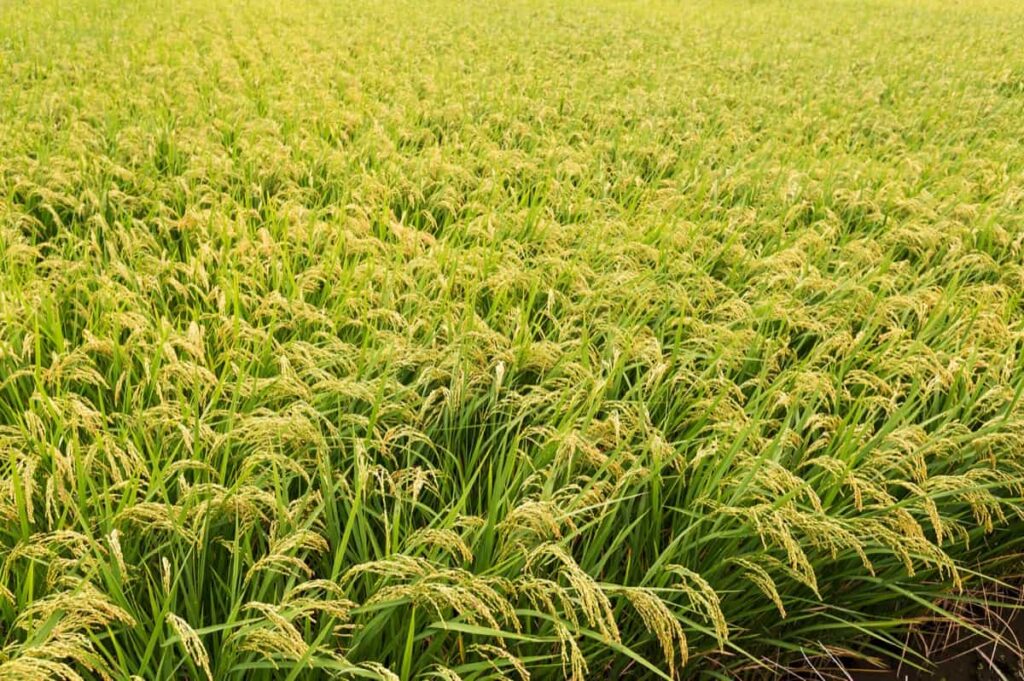
Training programs, workshops, and awareness campaigns on soil health, organic farming, and water conservation are invaluable. When farmers understand the science behind crop rotation, the benefits of intercropping, or the nuances of irrigation techniques, they can apply these learnings to enhance crop yields. In essence, an informed farmer is an empowered farmer, and this empowerment translates directly into a more prosperous agricultural landscape.
Crop Yield Per Acre in India
| Crop Name | Yield Per Acre |
| Rice / Paddy | 2,500-3,000 kg |
| Wheat | 2,900-3,200 kg |
| Maize / Corn | 2,500-2,700 kg |
| Sugarcane | 40-50 tons |
| Cotton | 500-600 kg |
| Groundnut (Peanuts) | 1,200-1,500 kg |
| Pulses / Legumes | 800-1,000 kg |
| Soybean | 1,000-1,200 kg |
| Mustard | 1,200-1,500 kg |
| Barley | 2,400-2,600 kg |
| Chickpeas (Gram) | 1,000-1,200 kg |
| Millets | 800-1,000 kg |
| Sunflower | 800-1,100 kg |
| Jowar (Sorghum) | 900-1,100 kg |
| Bajra (Pearl Millet) | 1,000-1,300 kg |
| Tea | 2,000-2,500 kg (leaves) |
| Coffee | 450 to 900 kg |
| Rubber | 1,000 to 1,500 kg |
| Jute | 1,500 to 2,500 kg |
| Safflower | 700 to 1,000 kg |
| Sesame | 400 to 800 kg |
| Coconut (Expressed as nuts) | 7,000 to 14,000 kg |
| Mulberry | 6,000 to 8,000 kg |
| Castor | 1,000 to 4,000 kg |
In case you missed it: Month-Wise Organic Farm Operation Management: Maintenance for Better Yields and Profit
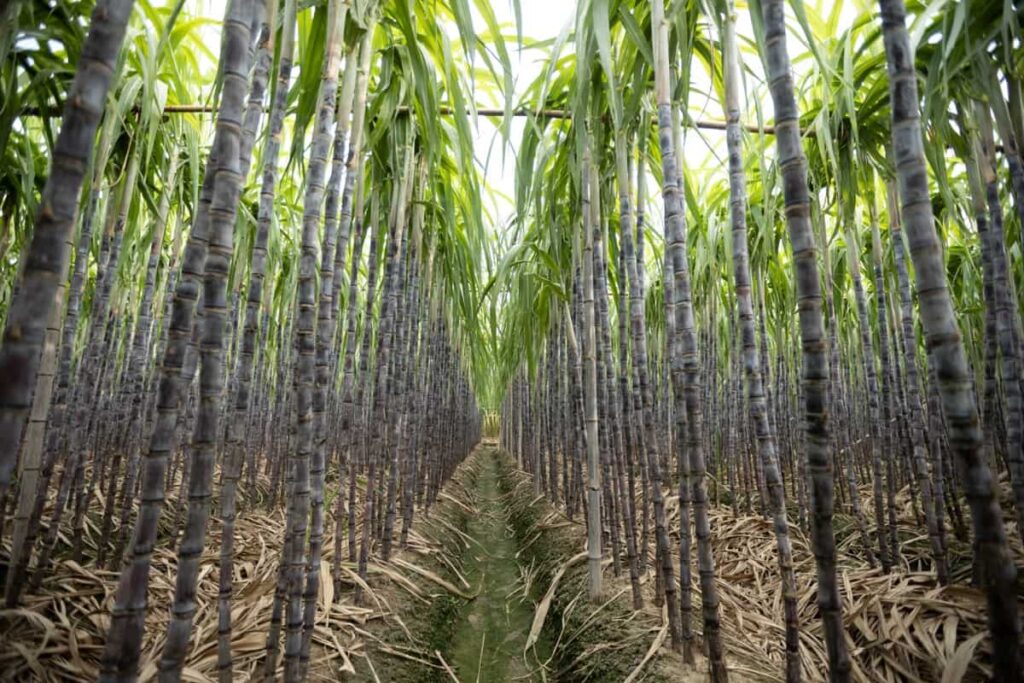
Conclusion
With the looming challenges posed by climate change, unpredictable weather patterns, and the ever-increasing demand for a burgeoning population, innovative and adaptive agricultural practices cannot be stressed enough. Techniques like precision farming and genetic engineering promise to revolutionize the farming landscape. At the same time, age-old practices like crop rotation and efficient irrigation methods remain as relevant as ever. Understanding the factors affecting crop yield, from soil fertility to pest prevalence, is pivotal in making informed decisions to sustain and enhance agricultural productivity.
Furthermore, the role of farmer education and training stands paramount. Equipping the Indian farmer with the right tools and knowledge can make a monumental difference in crop yield per acre. Government initiatives, technological advancements, and community-driven efforts must merge to ensure the agricultural sector thrives. As India strides toward agricultural excellence, combining modern techniques with traditional wisdom will pave the way for a prosperous, sustainable, and food-secure future.
- Crops Grown in Summer Season: Best Choices for Summer Gardening
- Organic Pest Control for Tomato Farming
- How to Maximize Sheep Farming Profit
- Broccoli Varieties: Choosing the Right Cultivars for Your Farm
- How to Raise Pigs in Your Own Backyard: A Comprehensive Guide
- Budget Friendly Sheep Shed Ideas: Cheap and Low-Cost Tips
- How Much Do Cattle Farmers Make: Revenue Streams in Cattle Farming
- Management Pests and Diseases in Your Cotton Field
- Sheep Farming Business Plan for Beginners
- Aquaponic Farming at Home: A Step-By-Step Guide
- Profitable Village Farming Business Ideas in 2024
- High-Yield Aquaculture: Fast-Growing Fish for Farming
- Effective Fish Pond Construction Techniques for Beginners
- Irrigation and Water Management in Pineapple Farming
- Blossom to Harvest: Mastering Flowering and Pollination in Papaya Farming
- Pig Fattening Essentials: From Selection to Sale for Beginners
- Raising Wagyu Cattle: A Complete Guide for Premium Beef Production
- Soil Types and Their Water Holding Capacity
- Optimizing Irrigation Schedules for Coconut Groves for Enhanced Yield
- Espresso Your Garden: Coffee Grounds for Healthier Acid-Loving Plants
- The Best Soil Mix for Snake Plants: How to Mix Your Own Snake Plant Soil
- Green Thumb Success: Expert Tips for Cultivating Greenhouse Beans All Year Round
- Bloom All Year Round: The Ultimate Guide to Indoor Hyacinth Care
- Eco-Friendly Gardening: How to Make Liquid Fertilizer from Kitchen Waste
- Ultimate Guide to Grow Anise in Pots: Explore Seed Propagation to Harvesting
- Guide to Raising Chester White Pigs: Discover Breed Facts to Growth Management
- Mastering the Elegance: The Ultimate Guide to Weeping Cherry Tree Care, Planting, and Maintenance
- Ultimate Guide to Planting Garlic in Grow Bags: Growing Strategies for Beginners
- How to Fix Spider Plant Leaf-Related Problems: Natural and Organic Remedies
- 10 Reasons Why Your Tulsi Plant is Shedding Leaves: Home Remedies and Solutions
- Optimizing Growth and Yield: The Advantages of Palm Bunch Ash Fertilizer
- Utilizing Neem Oil Extract as a Natural Pesticide for Hydrangea
- From Soil to Harvest: Various Ways in Which Farmers Can Use AI Tools
- Steps to Encourage and Induce Citrus Flowers: A Comprehensive Guide
- How to Fix Snake Plant Leaf-Related Issues: Natural and Organic Remedies
- Transform Your Garden into a Fragrant Oasis with Raat Ki Rani (Night Blooming Jasmine)
